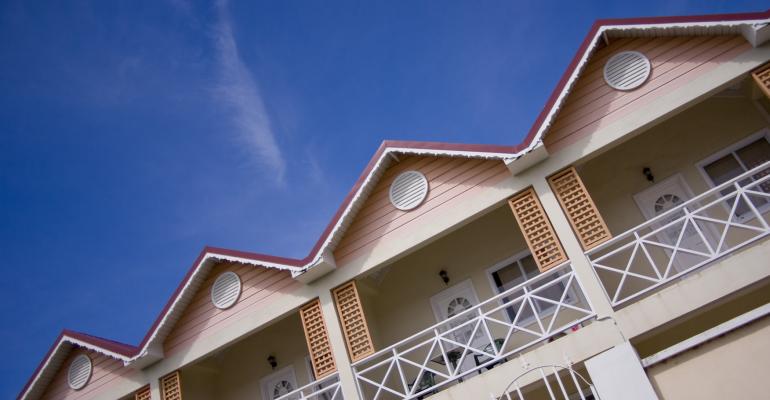More and more developers are creating apartment buildings large portions of which involve modular construction.
Over the past year, modular production in the multifamily sector has doubled, according to Tom Hardiman, executive director of the Modular Building Institute (MBI), based in Charlottesville, Va. “The interest level for modular construction among developers, contractors, and architects has skyrocketed,” he says.
Modular construction experts say the technique can dramatically shorten the time it takes to complete a building and reduced the cost of financing the project. Though only a fraction of new apartment projects involve modular construction, the number of buildings created each year from modules continues to grow, as does the number of developers interested in the process.
“Six years ago, we would [talk] to a developer about modular and they would completely ignore you,” says Robert Krulak, founder of New York City-based FullStack Modular, which provides modular design, manufacturing and construction services.
More developers are also becoming familiar with the advance planning necessary to make modular construction work. “Two years ago, developers would say: ‘Here’s a building I designed, can you modularize it?’” says Krulak. “Now developers are embracing the idea before they begin development.”
Modular construction refers to construction in which large pieces of a building are created at a factory and are transported to the development site on the back of a truck where the pieces, or modules, are lifted into place, usually with a crane.
"We think it's inevitable that modular construction, along with other forms of offsite construction, will continue to grow," says Hardiman. "How much it grows depends on several factors, including an understanding of the process by code officials, policy makers, and the traditional architecture, engineering, construction and operation community.”
After years of interest, apartments created with factory-built modules still represented less than one percent of all of the new multifamily communities that opened in 2018, according to MBI. (In the past, the trade organization measured the percentage of “commercial housing” built with modules.)
Factories turned out 2,314 modular units for apartment projects in 2018. That’s more than twice the 1,136 multifamily modules that factories produced in 2017, according to MBI. The state with the most multifamily units was California in 2018, followed by Massachusetts, Florida, New York, Washington, New Jersey and Colorado. These seven states represented almost all (87 percent) of the modules manufactured for apartment projects in 2018, according to MBI.
Another limiting factor today is simply the number of factories in this industry. “There are about 250 modular manufacturers in North America, building everything from single-family homes to multi-story hotels,” says Hardiman. “In the last year, we have seen a half dozen new modular factories open specifically to address housing and hospitality.”
Modular developers save time
So far, modular construction has not been proven to cut the hard cost of construction. The cost and value of apartment developments built with modules is roughly comparable to the cost of traditional construction, according to MBI’s study of 17 modular apartment developments.
Instead, modular developers are often able to finish their projects faster. An average apartment project built with modules was completed in just 241 days—or about eight months—from approval to occupancy, according to MBI’s study. The average size of these projects was 33,182 total sq. ft., using an average of 50 modules each.
That’s a significant time saving compared to traditional apartment developments, which might take 14 months from approval to occupancy. “This cash flow difference is enough to encourage many developers to consider modular,” according to MBI.
"While early modular projects have a mixed track record of cost savings, they have consistently been completed 20—50 percent faster than traditional on-site builds," according "Modular Construction: From Projects to Products," a June 2019 report from McKinsey & Co.
That’s partly because the modules can be created while workers on the building site are still digging the foundation of the new building. The process of creating modules in a factory is also far faster than building rooms on the building site. "This is due to the enclosed and controlled factory environment, the ability to coordinate and repeat activities, and increasing levels of automation," according to McKinsey & Co.
For developers who are relatively new to modular construction the design process can take more time, but the design phase will shorten as the process is repeated, according to McKinsey & Co.
“We feel certain that modular construction has, in fact, reached its turning point,” says Hardiman. “The multifamily and hospitality markets are among the fastest growing sectors for our industry this past year.”





